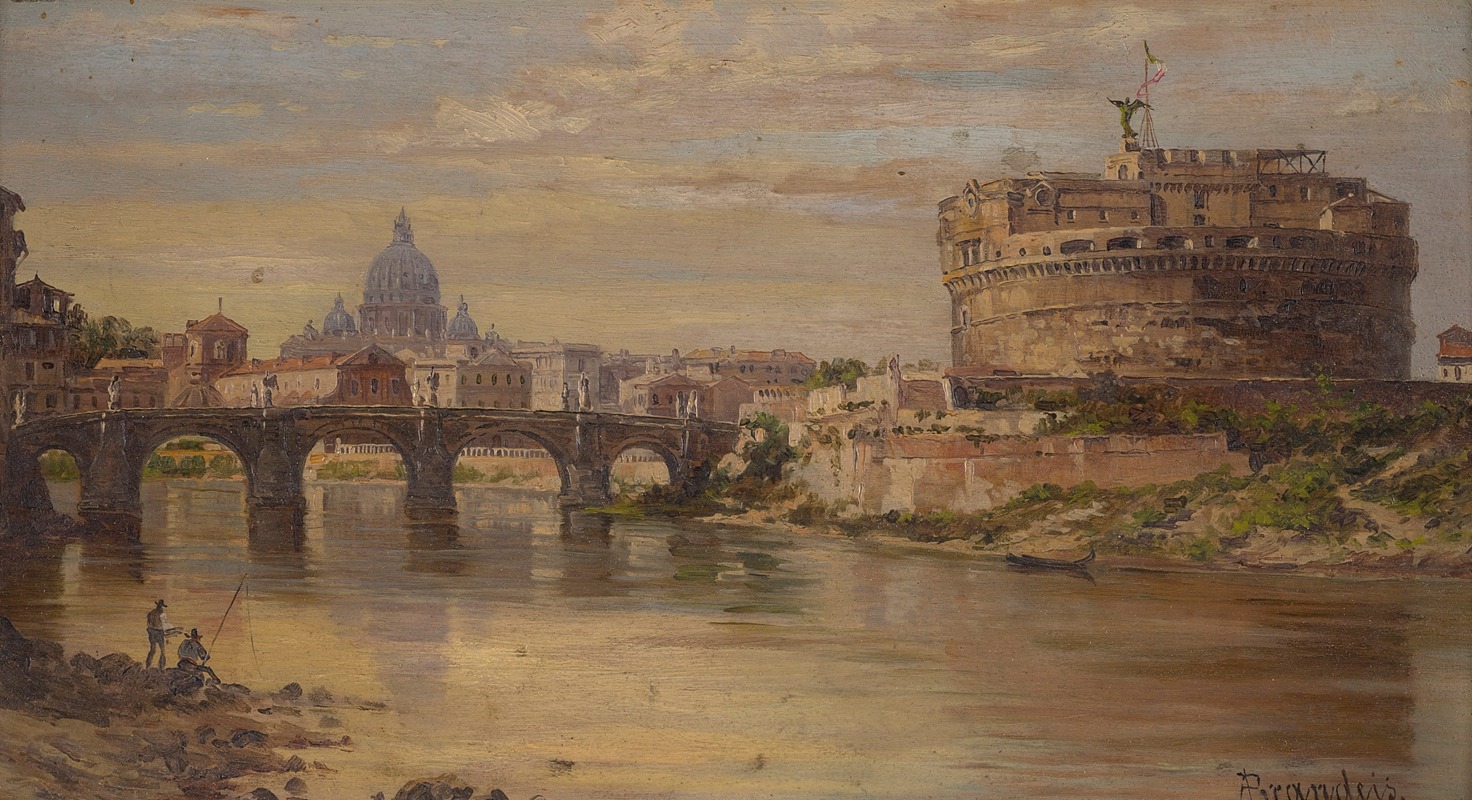
A View Of The Tiber With Castel Sant Angelo And St. Peters
A hand-painted replica of Antonietta Brandeis’s masterpiece A View Of The Tiber With Castel Sant Angelo And St. Peters, meticulously crafted by professional artists to capture the true essence of the original. Each piece is created with museum-quality canvas and rare mineral pigments, carefully painted by experienced artists with delicate brushstrokes and rich, layered colors to perfectly recreate the texture of the original artwork. Unlike machine-printed reproductions, this hand-painted version brings the painting to life, infused with the artist’s emotions and skill in every stroke. Whether for personal collection or home decoration, it instantly elevates the artistic atmosphere of any space.
Antonietta Brandeis was a Czech-Italian painter known for her detailed vedute, or cityscapes, particularly of Venice and Rome. Born in Miskovice, Bohemia, in 1849, she moved to Venice to study at the Academy of Fine Arts. Brandeis became one of the few women of her time to gain recognition in the male-dominated art world. Her works are characterized by their meticulous attention to architectural detail and vibrant use of color.
"A View of the Tiber with Castel Sant'Angelo and St. Peter's" is one of Brandeis's notable paintings, capturing a quintessential Roman scene. The painting depicts the Tiber River, a significant waterway in Rome, with two of the city's most iconic landmarks: Castel Sant'Angelo and St. Peter's Basilica. Castel Sant'Angelo, originally built as a mausoleum for Emperor Hadrian, has served various roles throughout history, including a fortress and papal residence. St. Peter's Basilica, located in Vatican City, is one of the largest churches in the world and a central site of pilgrimage for Catholics.
Brandeis's painting showcases her skill in rendering architectural features with precision. The Castel Sant'Angelo is depicted with its cylindrical structure and the statue of the Archangel Michael atop, which is a defining feature of the building. In the background, the dome of St. Peter's Basilica rises majestically, symbolizing the spiritual heart of the Catholic Church. The composition of the painting is carefully balanced, with the river providing a natural foreground that leads the viewer's eye towards the historical edifices.
The use of light in the painting is particularly noteworthy. Brandeis captures the play of sunlight on the buildings and the river, creating reflections that add depth and realism to the scene. The colors are vivid yet harmonious, with blues and greens of the river contrasting with the warm tones of the stone structures. This attention to light and color is a hallmark of Brandeis's work, contributing to the serene and timeless quality of her landscapes.
Brandeis's vedute were popular among tourists and collectors in the late 19th and early 20th centuries, as they provided a picturesque and accurate representation of famous Italian locales. Her paintings served as souvenirs for those who visited Italy and as a means for others to experience the beauty of these cities from afar. Today, her works are appreciated for their artistic merit and historical value, offering a glimpse into the urban landscapes of Italy during her lifetime.
While Brandeis is primarily associated with Venice, her Roman scenes, such as "A View of the Tiber with Castel Sant'Angelo and St. Peter's," demonstrate her versatility and ability to capture the essence of different Italian cities. Her contribution to the genre of vedute remains significant, as she brought a unique perspective and technical skill to her depictions of Italy's architectural heritage.
In summary, Antonietta Brandeis's "A View of the Tiber with Castel Sant'Angelo and St. Peter's" is a testament to her talent as a painter of cityscapes. Through her detailed and vibrant portrayal of Rome's landmarks, she has left a lasting legacy that continues to be admired by art enthusiasts and historians alike.


















